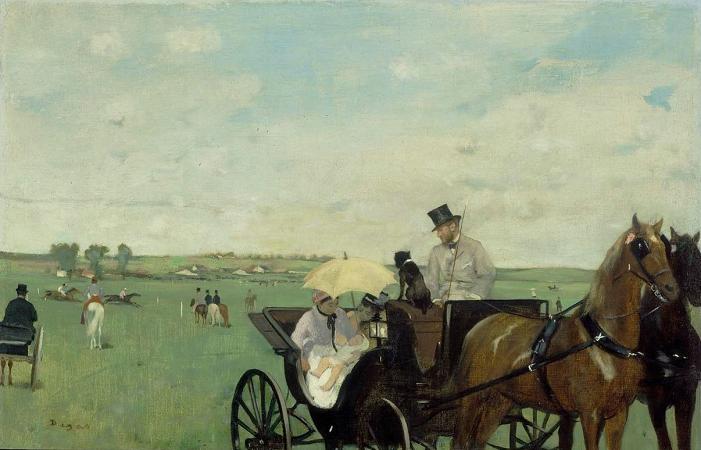Horse Racing. Horse racing is an equestrian performance sport, typically involving two or more horses ridden by jockeys over a set distance for competition. It is one of the most ancient of all sports, as its basic premise-to identify which of two or more horses is the fastest over a set course or distance-has been unchanged since at least classical antiquity. Horse races vary widely in format and many countries have developed their own particular traditions around the sport. Variations include restricting races to particular breeds, running over obstacles, running over different distances, running on different track surfaces and running in different gaits. While horses are sometimes raced purely for sport, a major part of horse racing's interest and economic importance is in the gambling associated with it, an activity that in 2008 generated a worldwide market worth around US$115 billion. Horse racing has a long and distinguished history and has been practised in civilisations across the world since ancient times. Archaeological records indicate that horse racing occurred in Ancient Greece, Babylon, Syria, and Egypt. It also plays an important part of myth and legend, such as the contest between the steeds of the god Odin and the giant Hrungnir in Norse mythology. Chariot racing was one of the most popular ancient Greek, Roman and Byzantine sports. Both chariot and mounted horse racing were events in the ancient Greek Olympics by 648 BC and were important in the other Panhellenic Games. It continued although chariot racing was often dangerous to both driver and horse, which frequently suffered serious injury and even death. In the Roman Empire, chariot and mounted horse racing were major industries. From the mid-fifteenth century until 1882, spring carnival in Rome closed with a horse race. In later times, Thoroughbred racing became, and remains, popular with aristocrats and royalty of British society, earning it the title Sport of Kings. Historically, equestrians honed their skills through games and races. Equestrian sports provided entertainment for crowds and displayed the excellent horsemanship needed in battle. Horse racing of all types evolved from impromptu competitions between riders or drivers. The various forms of competition, requiring demanding and specialized skills from both horse and rider, resulted in the systematic development of specialized breeds and equipment for each sport. The popularity of equestrian sports through the centuries has resulted in the preservation of skills that would otherwise have disappeared after horses stopped being used in combat. In Britain, horse racing became well-established in the 18th century. King Charles II was an avid sportsman who gave Newmarket its prominence. By 1750 the Jockey Club was formed to control the Newmarket races, set the rules of the game, prevent dishonesty, and making for a level field. Epsom Derby began in 1780. The five classic races began with the St Leger Stakes in 1776. The system was complete in 1814 with five annual races. Newmarket and the Jockey Club set the standards but most of the racing took place for small cash prizes and enormous local prestige in landowners' fields and in the rising towns. The system of wagering was essential to the funding and the growth of the industry, and all classes participated from the poor to royalty. High society was in control, and they made a special effort to keeping the riff-raff out and the criminal element away from the wagering. With real money at stake, the system needed skilled jockeys, trainers, grooms and experts at breeding, thereby opening new prestigious careers for working-class rural men. Every young. ambitious stable boy could dream of making it big. There are many different types of horse racing, including: Flat racing, where horses gallop directly between two points around a straight or oval track.
more...













